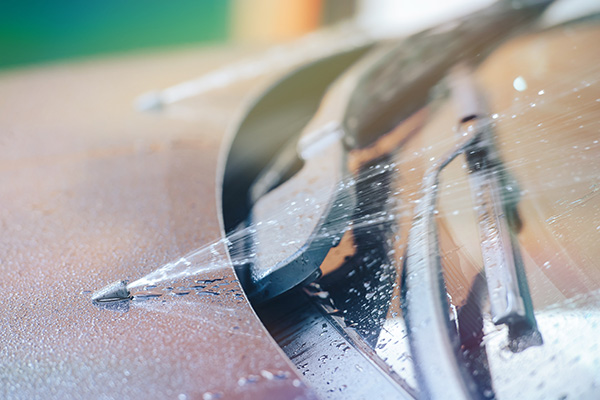
When your windshield washer fluid suddenly stops spraying, it can catch you off guard—especially when you really need it. A malfunctioning washer system can quickly become a safety concern, whether it's due to a clogged nozzle, a worn-out pump, or an electrical issue. Clear visibility is necessary in any driving condition, so it’s important to figure out what’s causing the issue and take care of it before it leads to bigger problems.
Is There Fluid in the Reservoir
It might sound obvious, but low or empty washer fluid is one of the most common causes of a no-spray situation. The reservoir is often tucked away in a corner of the engine bay, and it’s easy to forget about until the light comes on—if your car even has one.
Sometimes the tank isn’t actually empty but has old, diluted, or contaminated fluid that clogs the lines or nozzles. If you’ve topped it off with water or mixed different fluid types, you might end up with debris or frozen residue inside the system, especially in colder weather.
Pump Failure or Electrical Issues
When you pull the lever to spray your windshield, you should hear a faint humming noise—that’s the washer pump activating. If you don’t hear anything at all, that’s a sign the pump isn’t working.
The issue could be a blown fuse, a failed pump motor, or even a wiring problem. Pump motors can burn out over time, especially if they’ve been run dry or if debris has found its way into the system.
Electrical problems aren’t always obvious. A faulty connection or switch can prevent the pump from getting power, even if the rest of the vehicle seems fine.
Clogged or Frozen Washer Nozzles
If the pump is running but nothing’s coming out, your nozzles might be clogged or blocked. Dirt, road salt, or mineral buildup from hard water can obstruct the tiny openings where the fluid sprays out.
In colder climates, washer fluid lines and nozzles can freeze, especially if you’re using plain water or a low-quality solution not rated for freezing temperatures. When that happens, no amount of pumping will get fluid to the windshield until the system warms up or is flushed.
Some modern vehicles have heated washer nozzles to help with this, but they’re not always effective in extremely cold weather.
Pinched or Disconnected Washer Hoses
Another common issue is a kinked or disconnected hose somewhere between the reservoir and the nozzles. These hoses are usually made of thin plastic or rubber and can become brittle over time.
If you recently had front-end work done—like a new battery, headlight replacement, or even a collision repair—it’s possible the washer hoses were accidentally pinched or left unplugged.
You might even see washer fluid leaking under the car when you try to spray it. That’s a clear sign that the fluid is going somewhere—it’s just not reaching the windshield.
This System Is More Important Than You Think
It might seem like a minor problem, but a working washer system is essential for safe driving, especially in places where weather and road conditions can quickly reduce visibility.
Dust, pollen, bugs, and grime can build up on your windshield faster than you think. And when you can’t clear it off immediately, you’re not just annoyed—you’re distracted. A streaky or dirty windshield limits your view and puts you and your passengers at risk.
Most washer issues are inexpensive to fix, but putting them off can lead to more than just frustration. You could end up damaging the motor, cracking frozen lines, or finding yourself in a dangerous situation with no visibility in a sudden downpour or snow flurry.
Don’t wait until your windshield’s a mess—stop by Westside Car Care in Yakima, WA for fast, professional service that keeps your washer system ready when you need it most.